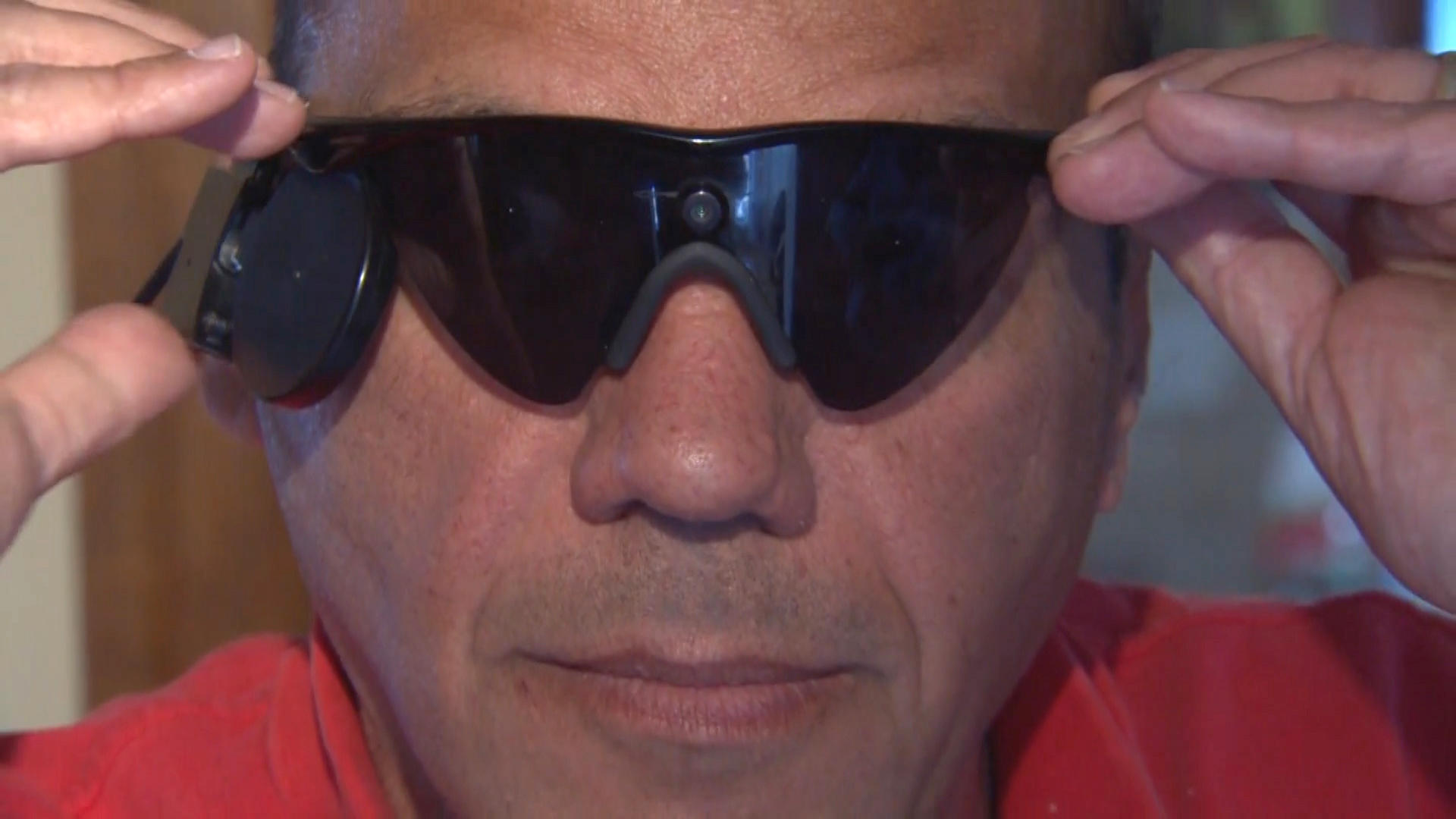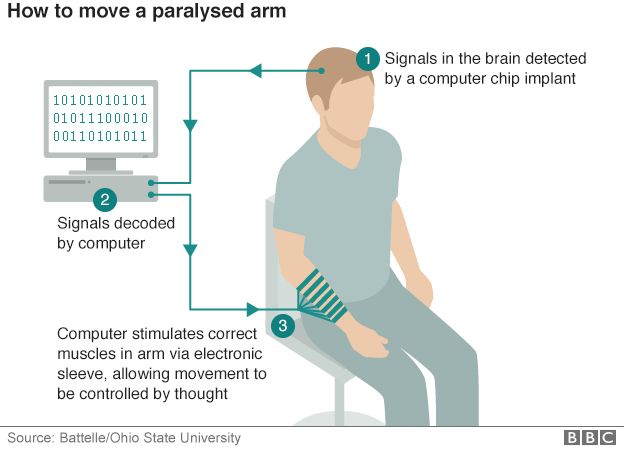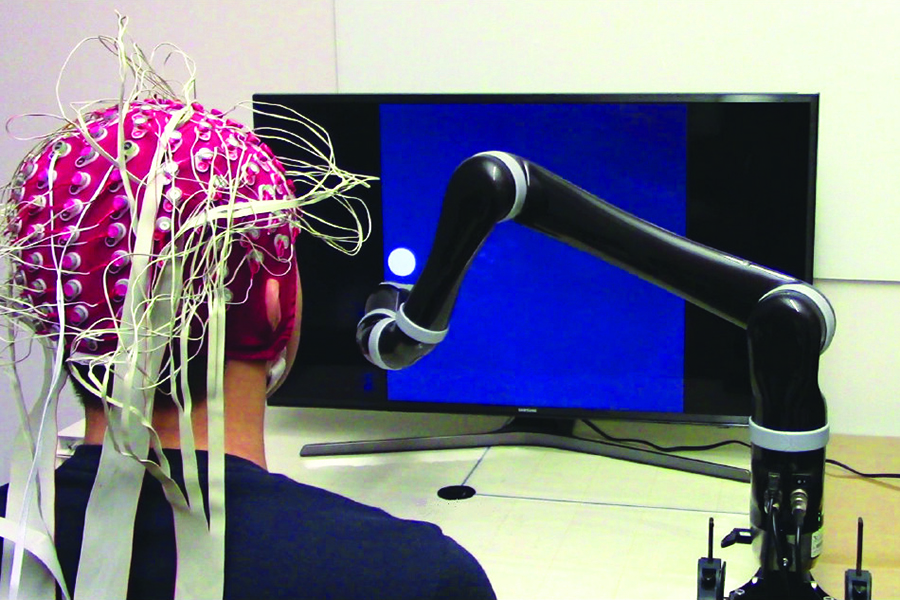Bionic Eyes: Helping more than 200 people regain sight
A CBS News report, After 20 years of darkness, bionic eye helps blind man see, described how technology helped a man who had been blind regain his vision. The “bionic eye” discussed in the article is not an eye, but rather a system comprised of a pair of glasses, a wearable computer, and implant in his retina.
Anthony Andreotolla suffers from retinitis pigmentosa (RP), and began to lose his sight as a teen. By the time he was in his thirties, he was completely blind. Fast-forward 20 years and he has regained partial sight thanks to a medical device designed by Second Sight. The device, called the Argus, uses a small video camera mounted on a pair of glasses that sends images to the wearable computer. Those images are processed and sent wirelessly to an implant in his eye in the form of electrical impulses that get passed along to the brain.

Illustration of a retinal prosthesis, which includes an external camera to acquire an image and electronics to process the image and transmit the signal to an implanted electronic chip on the retinal surface.
Patients such as Andreotolla learn to interpret these patterns of light. The images are rough and pixelated. They cannot transmit color, but rather light pulses. The patterns enable the patients to see shapes and objects, helping these patients navigate their world.
“I don’t see things the way other people do. I see everything in different flashes, lights, shapes,” stated Andreotolla. “I can tell the difference between a car or a bus or a truck. I can’t tell you what make the car is.”

Anthony Andreotolla, who suffers from a degenerative eye disease, can perceive shapes and objects with Argus retinal prosthesis. Image Credit: CBS BOSTON/WBZ-TV
Translating the video into light pulses on the implant
Image processing speed and resolution are key. Since its introduction, the Argus system has gone from a 16-pixel to a 60-pixel implant. The higher the number of pixels providing light pulses to the retina, the clearer the image for the patient. Processing speed is also important since delays in projection to the retina have the same effect as seeing your surroundings on a time delay.
MATLAB was used to develop the image processing algorithms that turn the video stream into light pulses on the retinal implant. Simulink automatically generated and deployed the code onto a DSP.
With the increased resolution, patients could identify letters in text. In a study published in the British Journal of Ophthalmology, the researchers found multiple blind subjects fitted with the Argus II system consistently identified letters and words using the device.
Over 200 RP patients regain sight
The Argus II, with improved resolution and processing speed, was first used in clinical trials in 2007. Since then, more than 200 patients have received the device in the U.S. and Europe. The first patient in Asia was treated earlier this year.
Second Sight is now working on implanting an array of electrodes on the brain rather than in the retina. According to MIT Technology Review, the device, called the Orion, is a modified version of the company’s current Argus II. It borrows about 90 percent of its technology from the Argus system.








评论
要发表评论,请点击 此处 登录到您的 MathWorks 帐户或创建一个新帐户。